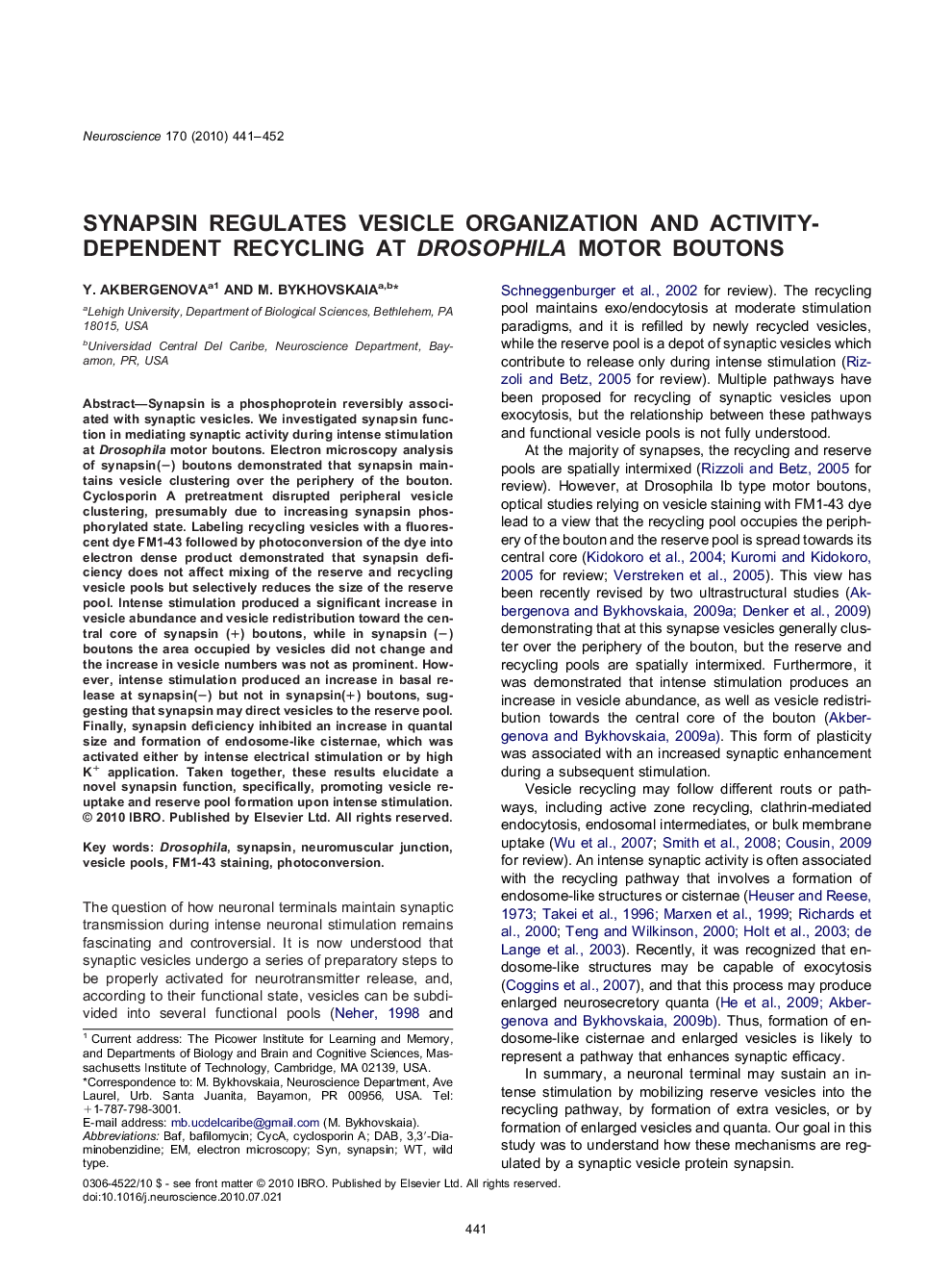| Article ID | Journal | Published Year | Pages | File Type |
|---|---|---|---|---|
| 6276925 | Neuroscience | 2010 | 12 Pages |
Abstract
Synapsin is a phosphoprotein reversibly associated with synaptic vesicles. We investigated synapsin function in mediating synaptic activity during intense stimulation at Drosophila motor boutons. Electron microscopy analysis of synapsin(â) boutons demonstrated that synapsin maintains vesicle clustering over the periphery of the bouton. Cyclosporin A pretreatment disrupted peripheral vesicle clustering, presumably due to increasing synapsin phosphorylated state. Labeling recycling vesicles with a fluorescent dye FM1-43 followed by photoconversion of the dye into electron dense product demonstrated that synapsin deficiency does not affect mixing of the reserve and recycling vesicle pools but selectively reduces the size of the reserve pool. Intense stimulation produced a significant increase in vesicle abundance and vesicle redistribution toward the central core of synapsin (+) boutons, while in synapsin (â) boutons the area occupied by vesicles did not change and the increase in vesicle numbers was not as prominent. However, intense stimulation produced an increase in basal release at synapsin(â) but not in synapsin(+) boutons, suggesting that synapsin may direct vesicles to the reserve pool. Finally, synapsin deficiency inhibited an increase in quantal size and formation of endosome-like cisternae, which was activated either by intense electrical stimulation or by high K+ application. Taken together, these results elucidate a novel synapsin function, specifically, promoting vesicle reuptake and reserve pool formation upon intense stimulation.
Keywords
Related Topics
Life Sciences
Neuroscience
Neuroscience (General)
Authors
Y. Akbergenova, M. Bykhovskaia,
